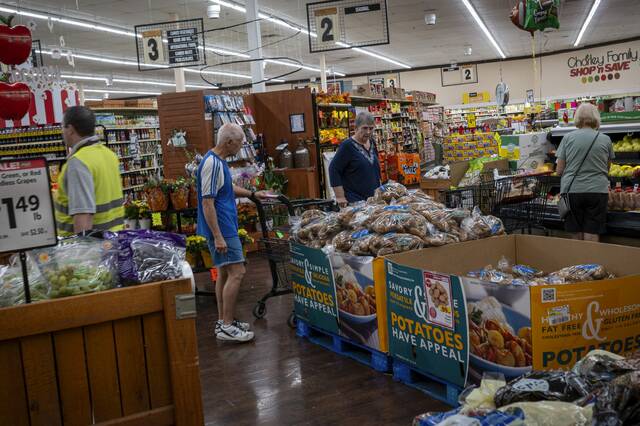The Supplemental Nutrition Assistance Program is the modern incarnation of what was originally called food stamps.
The program was born during the Great Depression, when feeding families was a challenge on a broad scale.
It was reconceived in the 1960s. President John F. Kennedy moved forward with a pilot program after seeing the scope of poverty in West Virginia, Pittsburgh, Detroit and St. Louis, along with 40 low-income counties in 22 states, were added as it was expanded.
The Food Stamp Act of 1964 would codify the program and make it permanent. It went nationwide 10 years later. The name changed to SNAP in 2008.
Over that time, the program has changed. Participants started by buying food stamps. Pay $1 for orange tickets and get another 50 cents in blue ones. Later scrip, brightly colored like Monopoly money, was issued to those who qualified by falling below an income threshold. Today, funds are loaded onto a plastic benefits card monthly.
The federal government shutdown pressed pause on that. The Pennsylvania Department of Human Services (DHS) webpage notes that benefits were stopped as of Oct. 16. November benefits will not be paid, and recipients will be notified when that changes.
The problem with that? SNAP recipients are not the only ones affected. Addressing food insecurity was never the whole point of the program.
States operate under agencies like DHS, which takes pass-through funds and may add more money before distributing to qualified applicants. But federally, SNAP operates under the Department of Agriculture. It is reauthorized under the Farm Bill legislation.
It is as much about supporting farming as it is about feeding the hungry. Its origins were about keeping farmers working at a time when many were going under.
“We got a picture of a gorge, with farm surpluses on one cliff and undernourished city folks with outstretched hands on the other. We set out to find a practical way to build a bridge across that chasm,” said the first administrator of the program, Milo Perkins.
Today, decades later, it isn’t just the farmers who will have fallout from SNAP shuttering. It will affect grocers, convenience stores, dollar stores and other locations that sell food. It will affect the people who work in those stores. There are webs of people and businesses that keep the food circulating between farms and shelves — trucking companies, warehouses, distributors, factories.
The average SNAP recipient gets about $177 per month. That’s a little less than $6 a day.
For the person receiving those funds, $6 a day means a bowl of cereal, a sandwich, a plate of spaghetti. But for the state, SNAP is part of the oil that keeps the moving parts moving.








